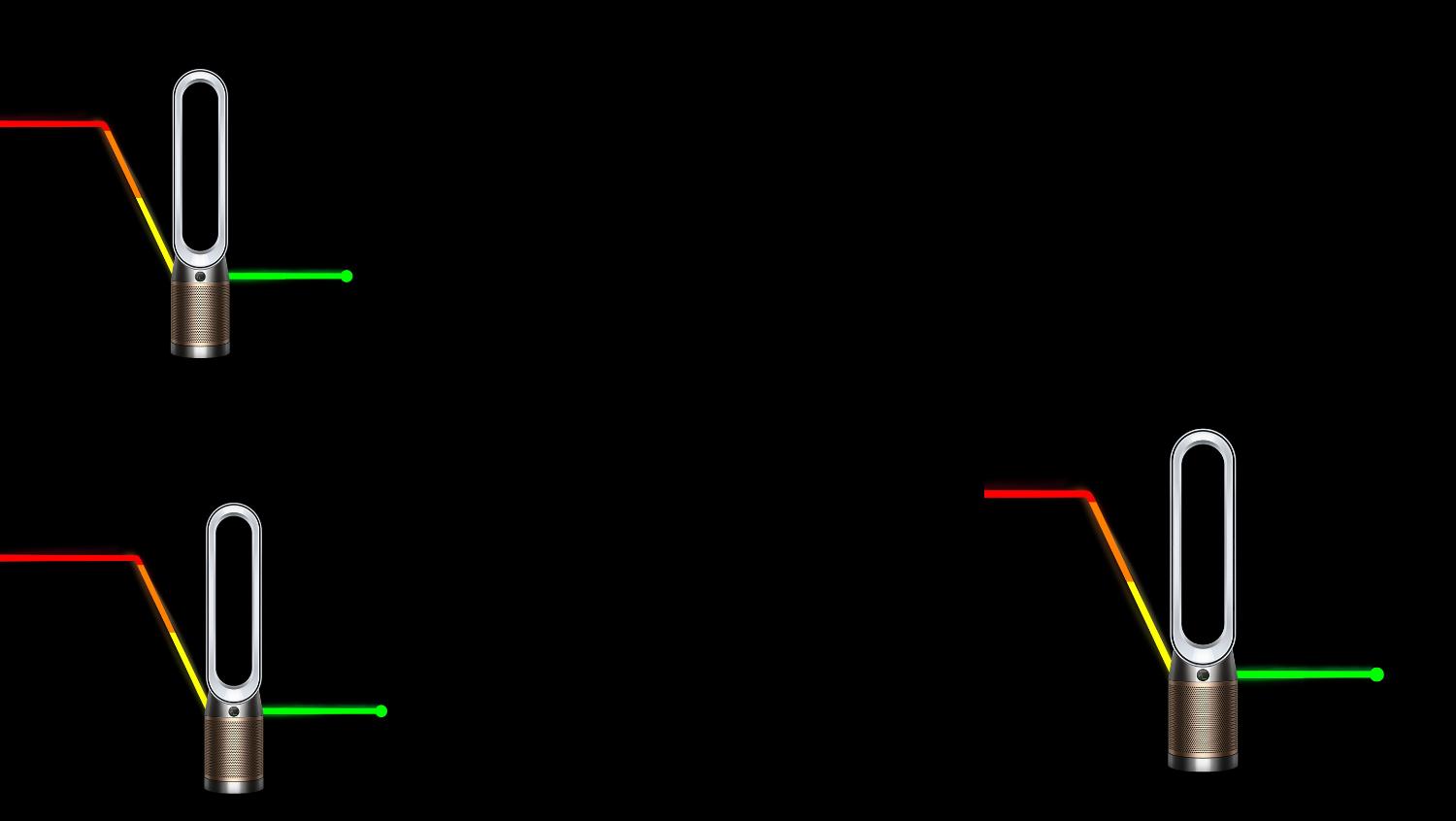

-
-
Fully-sealed machine
Fully sealed to HEPA H13 standard. So the pollution captured inside stays inside.²
-
Frequently asked questions
Indoor air pollution contains a mix of pollutants, including particulate matter (PM) and volatile organic compounds (VOCs).
Many indoor activities and household products release invisible pollutants. As our homes become increasingly well-sealed, it may seem like we're shutting pollution out – but in truth, we may be shutting it in.
What are the main indoor air pollutants?
Four indoor air pollutants which may be causing poor air quality in your home are:
Mould. Moulds are fungi that reproduce by making and releasing spores. It's usually found where there is excess moisture.
Volatile organic compounds. Or VOCs, can be released from building materials, personal care and cleaning products.
Particulate matter. These can include dust, smoke and exhaust fumes. Particles vary from PM0.3 - PM10 in size.
Allergens. Common allergens include pollen and pet dander. Biological pollutants from pets include multiple proteins in a pet’s fur, hair, saliva, urine or dander.
Dyson's sealed HEPA filters capture 99.97% of microscopic allergens and pollutants as small as 0.3 microns.
How do I Improve indoor air quality?
Here are a few actions you can take to improve the air quality in your home:
Invest in an air purifier. Your best solution for improving your indoor air quality is an air purifier. Be sure to choose one which automatically senses, is fully sealed, and has long-range air projection.
Get rid of dust. House dust can be a combination of dust mites, pet dander and pollen. Keeping on top of cleaning and vacuuming can help overall air quality.
Source control. Reduce pollution sources in your home (like burning scented candles).
How does the Dyson purifier range differ?
Unlike our competitors, every Dyson air purifier is fully sealed to HEPA H13 standard. This ensures we capture 99.95% of ultrafine particles⁴ and prevents pollutants from leaking back into the air you breathe.
What does VOC on my Dyson machine mean?
VOCs are 'Volatile Organic Compounds', meaning they are compounds containing carbon and are generally a gas at room temperature. Indoor VOCs can come from a range of activities, such as spraying perfumes or hair sprays, painting or cleaning.
When you see VOC on your machine's monitor or in your MyDyson app, you're experiencing a rise in VOCs, and your machine is working hard to remove the pollutant from the air, and project cleaned air into your home.
What does PM2.5 on my Dyson machine mean?
PM2.5 is particulate matter with a size of 2.5 microns or less, for example dust, ash and smoke particles. These can be released from a range of household activities such as burning candles or cooking.
When you see PM2.5 on your machine's monitor or in your MyDyson app, you're experiencing a rise in PM2.5, and your machine is working hard to remove the pollutant from the air, and project cleaned air into your home.
¹Based on capture of particles, ammonia, benzene, and acetic acid.









